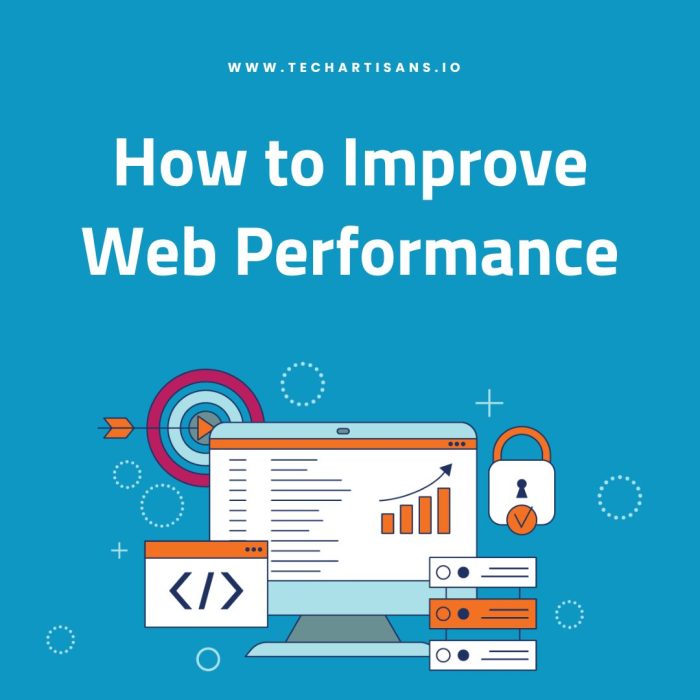In today’s digital world, speed is vital. A lightning-fast website is a necessity for small and medium-sized business owners. and web performance isn’t just speed; it’s about creating an amazing user experience, capturing attention, and boosting sales. A high-performing website gives you a competitive edge, keeps customers happy, and makes your business thrive. Discover best practices to speed up your site and stand out.
How to Improve Web Performance
In the fast-moving digital landscape, speed is crucial. So, how can you improve Web Performance? Well, it’s all about making your website faster, engaging visitors, and beating the competition. By discovering the key to an exceptional online experience, you’ll drive higher conversions and stay ahead in the digital race.
Understanding Web Performance
Web Performance is like the heartbeat of your website. It’s how fast it loads and how smoothly it works. This can make or break your user’s experience. Let’s explore Website efficiency and see how it can set your business apart in the digital world.
What is Web Performance?
Web Performance is all about how fast and smoothly web pages load and work in your browser. It’s vital for a great user experience and can give your website an edge in the digital world. Faster, smoother websites make people happy and more likely to stick around and do what you want them to do.
Why is Web Performance crucial for your business?
Website efficiency is crucial for your business’s success. A fast, smooth site keeps visitors engaged, leading to more interactions and higher sales. Search engines like Google also favor fast-loading sites, improving your search rankings. Plus, having a faster website can give you an edge over competitors in the digital race.
Auditing Your Current Website Speed
Before we make your website better, let’s find out how fast it is right now. This is like starting our journey to a faster website with a speed check. It’s like knowing where you are before deciding where you want to go. Here’s what we’ll do.
Tools and Techniques for Measuring Current Performance
Google PageSpeed Insights is a free tool that checks your web page and offers suggestions for speeding it up.
WebPageTest provides in-depth insights into load times, first byte times, and start render times, giving you a thorough performance review.
GTMetrix generates a performance report based on key indicators of page load speed.
Utilizing these tools can help you understand areas for improvement on your website. This analysis serves as a great starting point for enhancing your
Interpreting the Data from Speed Tests
Interpreting website speed test data involves understanding key metrics that provide insights into your web performance. Here’s a breakdown of these key metrics.
First Contentful Paint (FCP): FCP measures how long it takes for the first words or pictures to show up on a webpage when you open it. A lower FCP means the website loads faster.
Time to Interactive (TTI): Indicates how much time it takes for the webpage to be ready for users to click buttons, and links, and play around with the content.
Speed Index: It shows how fast a webpage fills up with stuff you can see. If the Speed Index is low, it means the webpage looks finished and ready to use quickly.
Web Hosting and Its Impact on Performance
Picking the right web host can make a big difference in how well your website works. A strong, dependable, and speedy web host can totally transform your site’s performance. So, let’s dive into how web hosting can affect your website’s speed and overall effectiveness:
Types Of Hosting And Their Effects On Speed
Shared Hosting is a budget-friendly option where multiple websites share the same server and its resources. However, it can slow down if one website experiences a sudden surge in traffic.
VPS Hosting offers a dedicated portion of a server’s resources, giving you better speed and reliability. It’s a middle-ground choice between shared hosting and having your own server.
Dedicated Hosting provides you with an entire server exclusively for your website. While it’s the most expensive option, it guarantees optimal Website efficiency and speed, making it a worthwhile investment for larger businesses.
When to Consider Upgrading Your Hosting Solution
There are several telltale signs when it’s time to consider upgrading your hosting solution.
Slow Site Speed: If your website takes forever to load, even after trying to make it faster, it’s probably time to consider upgrading your hosting. Switching to a stronger hosting plan can make your site much quicker and more responsive.
More Visitors: It’s great when your website gets more visitors, but if your current hosting can’t handle the increased traffic, your site might start acting up. Upgrading to better hosting can handle the growth and keep things running smoothly.
Website Outages: If your website keeps going down regularly, it’s bad for your business and frustrating for your users. Upgrading your hosting can give you more reliability, so your site stays up and running all the time.
Role of Content Delivery Networks
Content Delivery Networks (CDNs) are like Website efficiency superheroes! They make your website faster and better. Let’s see why they matter and how they can turbocharge your site.
How CDNs Work And Their Benefits
CDNs work by spreading servers worldwide. When someone wants stuff from your website, the CDN gives it to the nearest server. This makes your site faster.
CDNs are great for a few reasons. They speed up your site, make it reliable (if one server fails, another helps), and protect your site from heavy traffic and threats. So, CDNs are vital for a better website experience.
Selecting the Right CDN for Your Website
Choosing the right CDN for your website involves considering factors such as your site’s traffic volume, your audience’s geographical location, and your budget. Look for a CDN that provides robust security features, reliable uptime, and comprehensive global coverage to ensure optimal Web Performance. Remember, a suitable CDN can transform your website’s user experience by significantly improving loading times.
Optimizing Images and Media
To make websites load faster and give users a smoother experience, it’s essential to make images and media files as efficient as possible. These elements usually take up a big chunk of a web page’s data, so let’s look at how to do that effectively:
Best Practices for Image Compression and Formats
To make your web performance great, consider compressing your images using tools like JPEG Optimizer, TinyPNG, or ImageOptim before adding them. Also, pick the right image format: use JPEG for photos and detailed pictures, SVG for logos, icons, and text, and WebP for excellent compression of both photos and graphics.
Impact of Media On Load Times and User Experience
Adding videos and interactive stuff to your website can make it look cool, but it might also make it slow to load. When your site is slow, people don’t like it, and they might leave. This makes your bounce rates go up and could even hurt your SEO. So, you need to find a balance between cool visuals and a fast website.
Reducing Redirects and HTTP Requests
Cutting down on redirects and minimizing the number of requests your website makes are essential steps for speeding up your website and making it more user-friendly. Let’s see why these changes can lead to quicker load times and an improved browsing experience:
Cost of Redirects On Performance
Redirects act like roadblocks on your website, causing delays as your browser navigates. These stop signs can pile up and slow down your site, which is detrimental to its performance, especially on mobile devices with slower connections. Users prefer fast and seamless experiences, so excessive redirects can lead to frustration, impacting your website’s success.
Strategies to Minimize HTTP Requests
To speed up your website, reduce server requests by combining CSS and JavaScript files. Combine multiple images into one and use code to display the needed parts. Also, load only what’s on the screen, making the site load faster.
Leveraging Browser Caching
Browser caching is a clever way to boost web performance. It’s like finding a cozy spot for your website’s files in a user’s browser. This way, when they return, everything loads lightning fast. Let’s delve into optimizing browser caching to supercharge your site.
What is Browser Caching?
Browser caching is like saving website parts on your computer. When you first visit a site, it stores things like images and styles. Next time you visit, your browser will use those saved parts instead of asking the website for them again. This makes websites load faster and gives you a better experience.
How to Effectively Use Caching to Improve Speed
To effectively use caching and improve your website speed, ensure static files are cached for a longer time, and dynamic content is frequently refreshed. Use cache-control headers to specify how long files should be stored. Employing a plugin or tool can make the process easier, providing automatic optimization for improved Web Performance.
Importance of Mobile Optimization
In today’s mobile-driven world, optimizing your website for phones is essential. It makes users happy and boosts your website’s performance and customer conversions. Let’s see why mobile-friendliness is crucial and how it improves your site:
Mobile User Growth and Behavior
The rise of mobile users has been meteoric, with more than half of global web traffic now stemming from mobile devices. These users expect fast, seamless web experiences and tend to abandon sites that don’t load quickly or navigate smoothly. Their behavior underscores the need to prioritize mobile optimization for improved Web Performance.
Techniques for Optimizing Mobile Devices
To optimize your website for mobile devices, start by adopting a responsive design that automatically adjusts to different screen sizes. Compress images and reduce file sizes to speed up load times. Lastly, simplify navigation and streamline content for smaller screens to enhance the mobile browsing experience.
Minifying and Combining Files
Enhancing web performance is a total game-changer. One brilliant strategy is to compress and consolidate files. This wizardry makes your site race ahead and loads lightning fast. Let’s explore how this magic works and why it’s a huge win for your website’s speed.
Benefits of Minifying JavaScript and CSS Files
Minifying JavaScript and CSS files are like giving your website a speed boost. It trims down the code by removing extra stuff like spaces, comments, and line breaks. This makes the files smaller and helps your webpage load faster. When you minify, the browser can download and show your site quickly. That means a smoother experience for users, especially on slower mobile connections.
Tools for Combining Files to Reduce Requests
Combining files can make your website faster by reducing the number of requests it makes to the server. This technique means putting all your JavaScript files into one and doing the same for CSS files.
Useful Tools: Consider using tools like JSCompress and CSS Minifier to combine and shrink JavaScript and CSS files.
Automation: Gulp is a great tool that can automate the whole process, making it easier and more efficient.
Advanced Techniques and Considerations
To supercharge your website, let’s explore some fancy tricks and smart choices beyond the basics. These will make it faster and more enjoyable for your users.
Asynchronous Loading of Scripts
Loading scripts asynchronously is a smart technique for improving web performance. It allows scripts to load independently without slowing down the main webpage. This results in faster page loading, ensuring users don’t have to wait. As a result, your website remains responsive, even if some scripts load more slowly. This approach enhances the user experience by eliminating the need for users to wait for the page to appear.
Impact of Fonts On Performance
Choosing fonts for your website can affect how fast it loads and how user-friendly it is. Fancy custom fonts may look nice, but they can slow things down by needing extra requests. So, it’s important to find a good balance between style and speed. One way to keep your website fast is to use standard fonts that work well on the web.
Handling 404 Errors Efficiently
It’s really important to deal with 404 errors well to keep your website running smoothly. These errors happen when a page can’t be found, usually because of broken links. So, by regularly checking your website for these errors and quickly fixing or redirecting the links, you can make sure your website stays fast and your users have a great experience.
Regular Monitoring and Updates
Regularly monitoring and updating your website is crucial for top performance. This keeps it efficient, user-friendly, and ahead of the tech curve. Now, let’s dive in:
Keeping Track of Performance Over Time
Regularly monitoring your web performance is a crucial task. It helps you gain valuable insights into how well your website is doing, detect any issues, and assess the impact of any improvements you’ve made. Tools like Google’s PageSpeed Insights, Lighthouse, and WebPageTest offer comprehensive data that can help you evaluate factors like load times, page speed, and overall performance.
Importance of Regular Updates and Maintenance
To keep your website running smoothly, you need to regularly update and maintain it. This helps to keep your site safe, compatible with new technology, and well-liked by search engines. When you update your CMS, plugins, and themes, and fix any problems, it makes your site faster and more enjoyable for visitors.
Conclusion
Optimizing web performance is crucial for a better user experience, lower bounce rates, and higher search engine visibility. You achieve this by simplifying your site, using smart techniques, and staying updated. It’s an ongoing process, like tending to a garden – keep it healthy, and it will flourish. Use these best practices to cultivate your website into a high-performing, user-friendly, and successful online presence.







